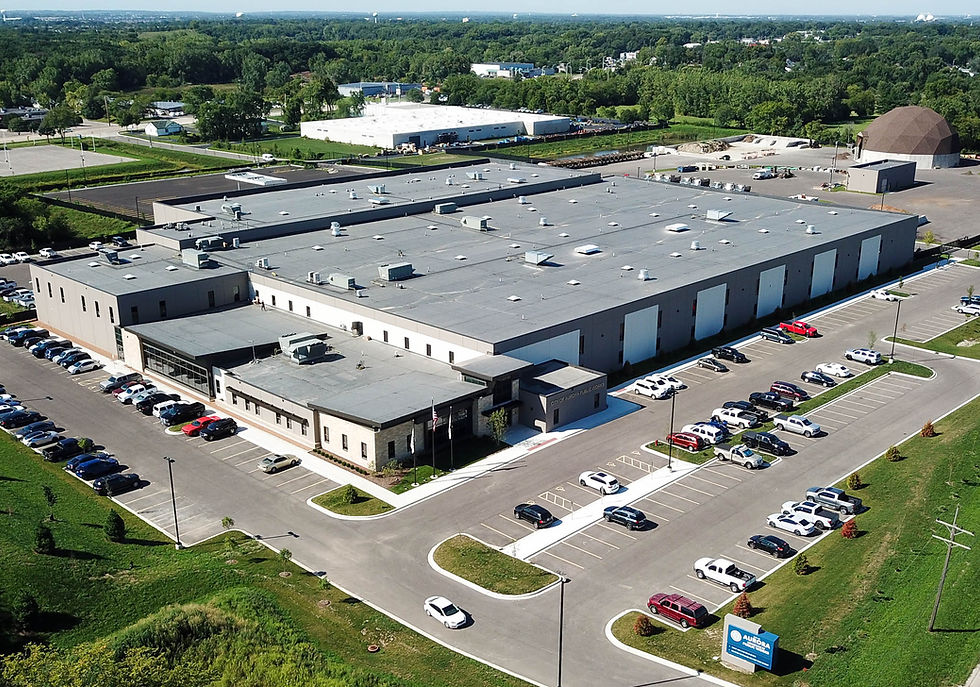Building with Precast Concrete in Cold Weather: A Superior Alternative to Traditional Construction
- Dukane Precast
- Dec 3, 2024
- 2 min read

Winter construction poses unique challenges. Cold temperatures, frost, snow, and ice can delay projects, increase costs, and compromise quality. However, choosing precast concrete over traditional construction methods can alleviate many of these challenges, keeping projects on track without sacrificing performance.
Challenges of Cold Weather Construction
Before diving into the benefits of precast, let’s review the common issues encountered during cold weather construction:
Curing Delays: Traditional concrete requires specific temperature conditions to cure properly. Cold weather slows the curing process, increasing project timelines.
Safety Concerns: Snow and ice create hazardous conditions for workers, equipment, and materials.
Increased Costs: Additional heating equipment, insulation, and anti-freeze additives are often needed to work with traditional materials, driving up costs.
Material Integrity: Improper curing due to low temperatures can weaken concrete and compromise the structure’s durability.
Why Precast Concrete Is Ideal for Cold Weather
1. Controlled Manufacturing Environment Precast concrete is manufactured in a temperature-controlled facility, ensuring consistent quality and eliminating weather-related curing issues. By the time precast components arrive on-site, they are fully cured and ready for installation.
2. Speed of Construction Precast components are fabricated off-site while foundation work begins on-site. Once ready, the components can be quickly assembled, significantly reducing construction timelines. This is especially advantageous during short winter days when on-site productivity may be limited.
3. Enhanced Durability Precast concrete is produced under stringent quality controls, ensuring high compressive strength and resistance to freeze-thaw cycles. Its durability is ideal for winter climates where materials are exposed to harsh conditions.
4. Safer Worksite Using precast minimizes the need for on-site pouring and curing, reducing the hazards associated with working in snow and ice. Installation crews can assemble precast panels quickly and safely, even in subzero temperatures.
5. Cost Savings By reducing the need for heating systems, tarps, and additives, precast concrete helps control costs. Faster installation times also translate to lower labor expenses.
6. Environmental Benefits Traditional winter construction often requires additional energy for heating and curing. Precast reduces this energy demand, making it a more sustainable choice.
Comparing Precast and Traditional Construction
Factor | Precast Concrete | Traditional Construction |
Curing | Pre-cured in controlled environments | Slowed by cold; requires additives/heating |
Installation Speed | Quick assembly, even in cold weather | Slower due to on-site pouring & curing |
Worker Safety | Minimal on-site hazards | Increased risk from snow and ice |
Material Quality | Consistent, freeze-thaw resistant | Potential for compromised strength |
Cost | Lower overall costs | Higher due to winter-specific challenges |
Applications of Precast in Cold Weather
Precast concrete is versatile and suitable for various winter construction projects, including:
Bridges: Precast beams and panels enable rapid assembly, crucial for winter bridge construction.
Parking Structures: Precast components are ideal for projects with tight timelines and adverse weather.
Buildings: From schools to office spaces, precast systems simplify construction in cold climates.
Cold weather doesn’t have to slow your construction projects. Precast concrete offers unparalleled advantages over traditional methods in terms of speed, safety, quality, and cost-efficiency. By leveraging precast, you can meet deadlines, control budgets, and deliver superior structures even in the most challenging winter conditions.
Ready to build smarter this winter? Contact us today to explore how precast concrete can transform your next project!





Comments